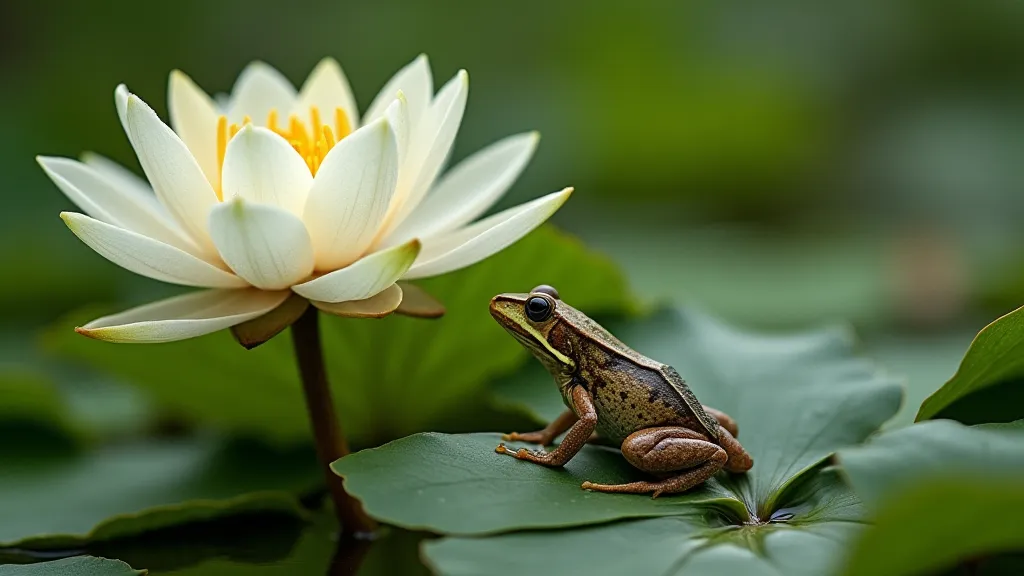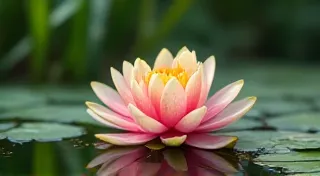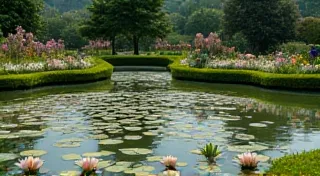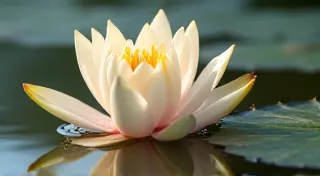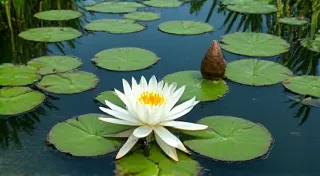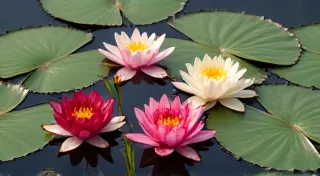Water Lilies and Companion Plants: Creating a Lush Ecosystem
Water lilies are the jewels of the pond, their elegant blooms and floating leaves adding a touch of serenity to any water garden. While water lilies themselves are stunning, enhancing your pond's beauty and ecological balance extends beyond just the lilies. Cleverly chosen companion plants can create a truly lush and thriving aquatic ecosystem. This article explores ideas for incorporating complementary plants around your water lily pond, creating a visual masterpiece while also supporting a healthy habitat for wildlife. The history and symbolism associated with these captivating blooms are as rich as their beauty; if you'd like to learn more, take a look at The Symbolism and History of Water Lilies.
Why Companion Plants Matter
Integrating companion plants offers benefits that go far beyond aesthetics. They contribute to:
- Improved Water Quality: Many aquatic plants absorb excess nutrients from the water, reducing algae growth and keeping the water clear.
- Habitat for Wildlife: A diverse range of plants provide shelter and food for fish, frogs, dragonflies, and other beneficial creatures. The interplay between these plants and the pond's inhabitants creates a miniature, self-sustaining world.
- Visual Interest: Different textures, colors, and heights create a dynamic and captivating landscape.
- Shade and Temperature Regulation: Some plants offer shade to protect delicate water lilies from intense sunlight and help regulate water temperature.
Choosing the Right Companions
Not all plants are suitable for a water lily pond. Consider factors such as light requirements, growth habits, and mature size when selecting companions. Successfully creating this balanced ecosystem requires careful consideration of each plant’s role, not unlike the delicate precision of a writer crafting a narrative – it’s all about the right elements in the right place. The selection process can also be influenced by the specific variety of water lily you choose; if you'd like guidance on that, check out Choosing the Perfect Water Lily Variety for Your Pond.
Marginal Plants - For the Pond's Edge
Marginal plants thrive in shallow water or boggy conditions around the pond’s edge, adding height and texture. Good choices include:
- Pickerel Rush (Pontederia cordata): Provides vertical interest and striking purple flowers.
- Sweet Flag (Iris pseudacorus): Offers beautiful yellow flowers and fragrant foliage.
- Cattails (Typha spp.): Offer a naturalistic look (choose dwarf varieties to avoid overcrowding). Their prevalence can significantly impact the pond’s overall balance.
- Water Mint (Mentha aquatica): Fragrant foliage with refreshing scent. Be mindful of its spreading habit.
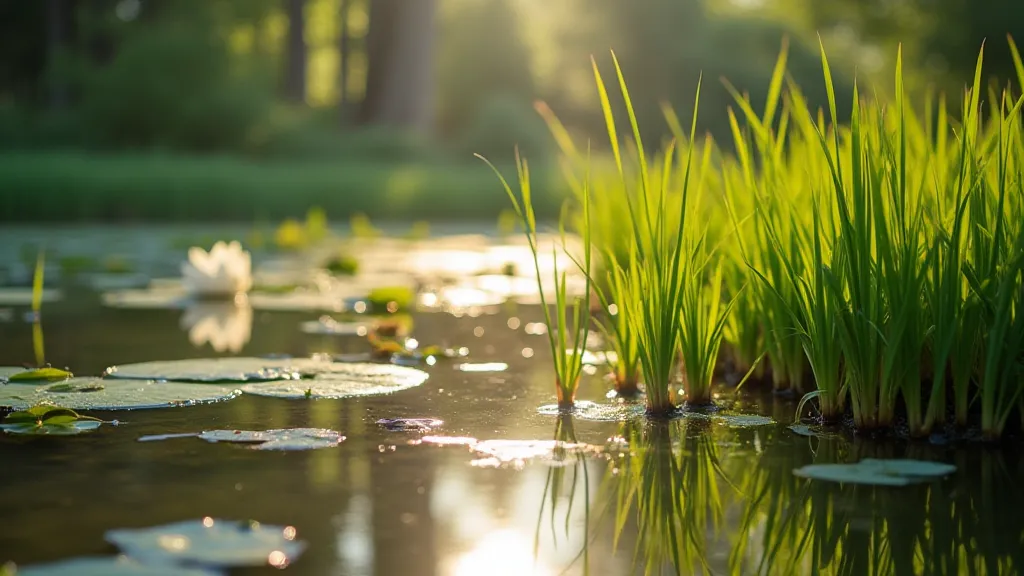
Floating Plants - Surface Charm
Floating plants, like water lettuce and parrot feather, provide shade and help control water temperature. However, be mindful of their growth rate and potential to cover the entire surface. Regular thinning may be necessary. A well-managed floating plant population helps maintain the pond's oxygenation and clarity. Considering the complexity of these interactions reminds one of the nuanced relationships that exist even in seemingly simple systems.
- Water Lettuce (Pistia stratiotes): Provides excellent shade.
- Parrot Feather (Myriophyllum aquaticum): Adds feathery texture and provides habitat for small creatures.
- Azolla (Azolla filiculoides): A tiny floating fern that provides shade and can help fix nitrogen in the water.
Submerged Plants - Oxygenating the Pond
Submerged plants are essential for oxygenating the water and providing shelter for fish. They are generally planted in pots or weighted down on the pond bottom. These plants perform a vital role, comparable to the unseen structures that support a narrative. They’re the foundation of a healthy ecosystem. It's a fascinating reflection of how interconnected everything is, and how seemingly small elements can have a profound impact; an idea explored further in The Submerged Symphony: How Pond Ecology Mirrors the Creative Process. Their influence on the water's chemistry is a testament to their importance. Selecting the right submerged plants involves understanding their growth habits and how they interact with other pond inhabitants.
- Anacharis (Egeria densa): A fast-growing oxygenator.
- Hornwort (Ceratophyllum demersum): Adaptable and easy to grow.
Design Considerations
Think about the overall design you want to achieve. A more naturalistic pond might feature a variety of marginal and submerged plants, while a formal pond might benefit from a more structured planting scheme. The integration of various plant types creates visual layers and a sense of depth, much like a skilled writer builds tension and complexity in a story.
Consider height and color contrasts. Taller plants can create a backdrop for your water lilies, while plants with contrasting foliage colors can add visual interest. The interplay of light and shadow, form and texture, contributes to the pond’s overall aesthetic appeal, evoking a sense of tranquility and wonder.

Maintaining a Balanced Ecosystem
Regularly remove dead or decaying plant matter to prevent nutrient buildup. Monitor plant growth and thin out any species that are becoming overly dominant. A healthy pond ecosystem requires ongoing care and attention. This continual refinement mirrors the editing process in writing, where details are adjusted to achieve the desired effect.
Be mindful of introducing invasive species. Always research plants thoroughly before adding them to your pond. Introducing foreign elements can disrupt the established balance and have unforeseen consequences. This parallels the importance of careful planning and research in any creative endeavor.
Expanding Your Understanding
The pond ecosystem presents a beautiful analogy for understanding complex systems and interconnectedness. The way plants communicate through chemical signals and how organisms rely on each other is a testament to the intricate web of life. The delicate balance of the pond can reveal insights into other areas of existence, demonstrating the importance of observation, adaptability, and responsible stewardship. The communication happening beneath the surface of the water can be viewed as a form of submerged dialogue – a fascinating topic explored further in The Rooted Whisper: Understanding Submerged Communication in Aquatic Gardens – A Writer's Parallel.
Conclusion
Creating a lush and vibrant water lily pond is about more than just the lilies themselves. By carefully selecting and incorporating companion plants, you can transform your pond into a thriving ecosystem that is both beautiful and beneficial for wildlife. With a little planning and care, you can create a water garden that you will enjoy for years to come. The creation of such a peaceful haven offers a refuge for both humans and wildlife, illustrating the transformative power of nature and human connection.
